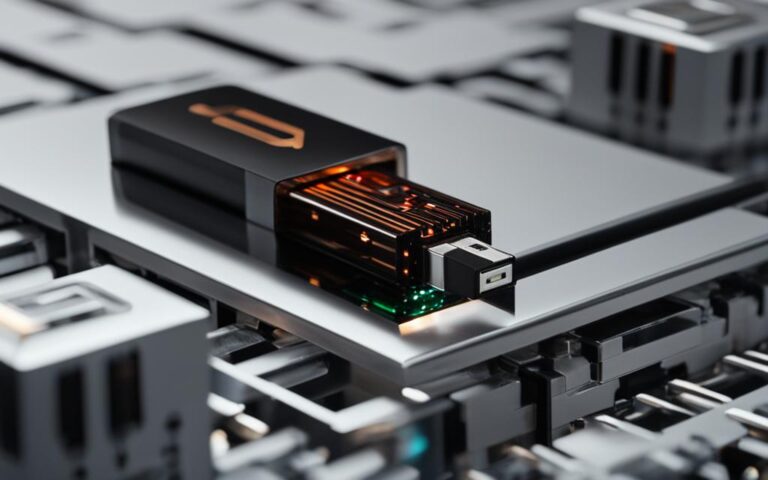Are you tired of slow or unreliable Wi-Fi connections? Is your internet browsing continually interrupted by connectivity issues? Don’t fret because we have got you covered. In this comprehensive guide, we will help you navigate through common Wi-Fi connectivity issues and provide effective solutions. So, say goodbye to frustrating Wi-Fi connections and enjoy seamless browsing with our troubleshooting tips and Wi-Fi connectivity solutions.
Whether you are at home or in the office, weak Wi-Fi signals or connection drops can be frustrating. This guide will help you understand the common Wi-Fi connectivity problems and identify their root causes. By doing so, you will be better equipped to troubleshoot and resolve any issues that arise.
Checking your Wi-Fi signal strength is essential for resolving connectivity issues. Learn how to check your Wi-Fi signal strength and take the necessary steps to improve it, ensuring a stable and strong connection throughout your home or office. Additionally, we will guide you on updating your Wi-Fi router’s firmware to ensure compatibility with the latest devices and technology, enhancing overall performance and stability.
Unsecured Wi-Fi networks are susceptible to unauthorized access, which can lead to slow speeds and compromised privacy. Therefore, we will provide essential tips for securing your Wi-Fi network and protecting your data from potential threats. Furthermore, we will guide you on optimizing Wi-Fi channel selection to minimize interference and maximize your connection’s performance.
If all else fails, resetting your Wi-Fi router can often resolve persistent connectivity issues. We will explore the proper steps to reset your router and restore your connection to its optimal state. If you are experiencing frequent Wi-Fi connection drops, don’t worry, we’ve got you covered. This guide will provide effective troubleshooting techniques to eliminate connection drops and maintain a stable Wi-Fi connection.
Moreover, we will help you enhance your Wi-Fi range and coverage, ensuring a strong and reliable connection no matter where you are. Lastly, we will guide you on dealing with Wi-Fi network congestion, which can lead to sluggish performance and connectivity issues. Discover effective strategies to alleviate network congestion and optimize your Wi-Fi experience.
By following the tips and solutions provided in this guide, you can effectively solve common Wi-Fi connectivity issues. Enjoy a seamless and reliable internet experience with a stable and fast Wi-Fi connection. Let’s get started!
Understanding Wi-Fi Connectivity Problems
Are you tired of slow or unreliable Wi-Fi connections? Before we explore possible solutions to common Wi-Fi problems, let’s first identify the root causes of these connectivity issues. By understanding these issues, you’ll be better equipped to troubleshoot and resolve any problems that arise.
Fixing Wi-Fi connection problems can be a complex issue with numerous potential causes. Troubleshooting common Wi-Fi problems requires a systematic approach that evaluates every aspect of your Wi-Fi network. Here are some of the most common Wi-Fi problems:
- Interference from other Wi-Fi networks or electronic devices
- Distance between your device and the router
- Signal obstructions, such as walls or furniture
- Outdated router firmware
- Network congestion
By recognizing these common issues, you’ll be able to take the necessary steps to resolve Wi-Fi connectivity issues and improve your internet experience.
“Without a clear understanding of the root Wi-Fi connectivity problems, it is impossible to fix them effectively.”
Fixing Wi-Fi Connection Problems: A Step-by-Step Guide
To resolve Wi-Fi connection problems, you need to follow a systematic troubleshooting approach. Here is a step-by-step guide:
- Step 1: Check your Wi-Fi signal strength to ensure that your device is connected to a strong and stable network.
- Step 2: Identify and eliminate potential interference from neighboring Wi-Fi networks and electronic devices.
- Step 3: Update your Wi-Fi router firmware to ensure compatibility with the latest devices and technology.
- Step 4: Secure your Wi-Fi network to prevent unauthorized access and protect your privacy.
- Step 5: Optimize Wi-Fi channel selection to minimize interference and maximize performance.
- Step 6: Reset your Wi-Fi router to troubleshoot persistent connectivity issues.
- Step 7: Troubleshoot Wi-Fi connection drops by following the steps provided in this guide.
- Step 8: Enhance your Wi-Fi range and coverage to ensure a stable and strong connection throughout your home or office.
- Step 9: Address Wi-Fi network congestion by following effective strategies that minimize network traffic and optimize performance.
By following these steps in order, you’ll be able to diagnose and solve common Wi-Fi connectivity issues effectively.
Checking Your Wi-Fi Signal Strength
Weak Wi-Fi signals can lead to frustrating connection issues, such as slow speeds and intermittent connections. It is essential to check your Wi-Fi signal strength to ensure that your connection is strong and reliable throughout your home or office.
One effective way to check your Wi-Fi signal strength is to use a Wi-Fi analyzer tool. This tool measures signal strength and provides a visual representation of Wi-Fi networks in your area, including signal-to-noise ratio and channel overlap. By using this tool, you can identify areas with weak signal strength and take necessary steps to improve your connection.
If your Wi-Fi signal strength is weak, there are several steps you can take to improve it.
| Step | Description |
|---|---|
| Move your router | Place your router in a central location, away from walls and obstructions, to increase signal coverage. |
| Upgrade your router | If your router is outdated, consider upgrading to a newer model that offers improved performance and coverage. |
| Use a Wi-Fi range extender | If you have dead spots in your home or office, a Wi-Fi range extender can amplify your signal and extend your coverage area. |
| Adjust your router’s antenna | Ensure that your router’s antenna is properly adjusted, pointing in the direction of your devices to maximize signal strength. |
By following these steps, you can improve your Wi-Fi signal strength and enjoy a stable and reliable connection throughout your home or office. Say goodbye to frustrating connection issues and hello to seamless browsing and streaming!
Updating Your Wi-Fi Router Firmware
If you’re experiencing Wi-Fi connectivity issues, outdated firmware could be the culprit. Firmware is a type of software that is specifically designed to run on your Wi-Fi router, dictating how it operates. Over time, your firmware may become incompatible with new devices and technologies, leading to connectivity problems. Luckily, updating your firmware is a simple process that can often solve connectivity issues.
Why Update Your Wi-Fi Router Firmware?
Older firmware can cause various connectivity issues like slow speeds, intermittent connections, and network drops. Updating your firmware ensures compatibility with new devices and technologies, enhancing overall performance and stability. It may also patch security vulnerabilities that could make your network susceptible to hacking attempts.
How to Update Your Wi-Fi Router Firmware
The process of updating your Wi-Fi router firmware varies depending on your router model. However, most routers have a web-based interface where you can access and update the firmware. Here are the general steps:
- Check your router’s documentation or manufacturer website for instructions on updating the firmware.
- Log in to your router’s web-based interface using the designated IP address and login credentials.
- Locate the firmware update section and download the latest firmware version for your router model.
- Upload the firmware file to your router and follow the prompts to complete the installation process.
- After the installation process is complete, restart your router and check for improvements in your Wi-Fi connectivity.
Note: It’s essential to follow the correct procedure when updating your router firmware to avoid any potential issues. Incorrectly installing firmware or using outdated firmware files can lead to permanent damage to your router.
By updating your Wi-Fi router firmware, you can troubleshoot and fix connectivity problems, ensuring that your home or office network is optimized for performance and stability.
Securing Your Wi-Fi Network
Unsecured Wi-Fi networks are vulnerable to unauthorized access, which can lead to various connectivity issues. By securing your Wi-Fi network, you can protect your data and enjoy a more stable internet connection. Here are some Wi-Fi troubleshooting tips to help you secure your network:
- Change your default Wi-Fi network name (SSID): Hackers can easily guess the default network name and use it to gain access to your network. Change your SSID to something unique and avoid using personal information.
- Create a strong password: Use a long and complex password that includes a mix of letters, numbers, and symbols. Avoid using common words or phrases that can be easily guessed.
- Enable network encryption: Use WPA2 (Wi-Fi Protected Access II) encryption to ensure that all data transmitted over your network is secure. Older encryption methods, such as WEP (Wired Equivalent Privacy), can be easily hacked.
- Disable remote management: Remote management allows you to access your router from anywhere on the internet. However, it also opens up your network to potential security threats. Disable remote management and access your router only when you’re connected to your home network.
- Enable MAC address filtering: MAC (Media Access Control) address filtering restricts network access to devices with approved MAC addresses. This prevents unauthorized devices from accessing your network.
Implementing these Wi-Fi connectivity solutions can help you secure your network and prevent potential connectivity issues. Take the necessary steps to protect your data and enjoy a more seamless online experience.
Optimizing Wi-Fi Channel Selection
If you’re experiencing slow or unstable Wi-Fi connectivity, channel selection may be the issue. Wi-Fi channels operate on specific frequency bands, and interference from neighboring networks can cause connectivity problems. By optimizing your channel selection, you can minimize interference and improve your overall connection.
To optimize your Wi-Fi channel selection, follow these steps:
- Determine your current Wi-Fi channel by logging into your router’s web interface and checking the channel settings.
- Use a Wi-Fi scanner app or software to identify neighboring networks and their channel settings.
- Choose a channel that is at least two channels away from neighboring networks. For example, if your neighbor’s Wi-Fi is on channel 1, choosing channel 6 or 11 may be optimal.
- Change your Wi-Fi channel settings in your router’s web interface. Consult your router’s manual for specific instructions.

Optimizing your Wi-Fi channel selection can solve common Wi-Fi connectivity issues and improve your overall internet experience. Use these Wi-Fi connectivity solutions to troubleshoot and solve any connectivity problems you may have.
Resetting Your Wi-Fi Router
If you’re still experiencing Wi-Fi connectivity issues after trying the above solutions, it may be time to reset your router. Resetting your router can fix persistent issues and restore your connection to its optimal state. Follow the steps below to reset your Wi-Fi router:
- Locate the reset button on your router. It’s usually a small button located on the back or bottom of the device.
- Using a paperclip or similar object, press and hold the reset button for about 10-15 seconds.
- Release the reset button and wait for the router to reboot. This process can take up to several minutes.
- Once the router has finished rebooting, try reconnecting your device to the Wi-Fi network.
It’s important to note that resetting your router will erase any custom settings you may have configured, such as network names and passwords. You’ll need to reconfigure these settings after the reset.
If resetting your router doesn’t fix the issue, it may be time to contact your internet service provider or consider upgrading your router.
Troubleshooting Wi-Fi Connection Drops
Experiencing frequent Wi-Fi connection drops can be frustrating and disruptive, especially when you’re in the middle of an important task or streaming your favorite show. But don’t worry, there are steps you can take to troubleshoot and resolve this common Wi-Fi problem.

Step 1: Check Your Wi-Fi Signal Strength
As mentioned in section 3, weak Wi-Fi signals can cause a variety of connectivity issues, including connection drops. Check your Wi-Fi signal strength in the area where you’re experiencing drops and take necessary steps to improve it. This may include relocating your router or installing a Wi-Fi range extender.
Step 2: Restart Your Devices
Restarting your devices, such as your computer or smartphone, can often solve Wi-Fi connection drops. Simply turn off your device, wait a few seconds, and turn it back on again.
Step 3: Update Your Wi-Fi Router Firmware
As mentioned in section 4, outdated firmware can cause various connectivity issues, including connection drops. Make sure your Wi-Fi router’s firmware is up to date to ensure compatibility with the latest devices and technology.
Step 4: Change Your Wi-Fi Channel
Interference from other Wi-Fi networks operating on the same channel can cause connectivity drops. Change your Wi-Fi channel to a less congested one to reduce the likelihood of interference.
Step 5: Contact Your Internet Service Provider
If you’ve tried all of the above troubleshooting steps and are still experiencing frequent Wi-Fi connection drops, it may be time to contact your internet service provider (ISP). They can help diagnose and resolve any issues with your internet connection.
Tip: If you’re experiencing connection drops while using a specific app or website, try clearing your browser cache or uninstalling and reinstalling the app to see if that resolves the issue.
By following these Wi-Fi troubleshooting tips, you can effectively solve common connection drop issues and enjoy a stable and reliable Wi-Fi connection.
Enhancing Wi-Fi Range and Coverage
If you find that certain areas of your home or office have weak Wi-Fi signals, you may be experiencing range and coverage issues. Fortunately, there are several ways to enhance your Wi-Fi connectivity and improve your browsing experience in these areas.
1. Position Your Router Strategically
The placement of your Wi-Fi router can significantly impact its range and coverage. To achieve maximum coverage, position your router in a central location, free from any obstructions or interference. Keep it elevated and away from walls, furniture, and other electronics that may interfere with the signal. Also, try to position it as close to the devices that need a strong connection as possible.
2. Consider Wi-Fi Range Extenders
If you have trouble reaching certain areas of your home or office due to weak signals, consider investing in Wi-Fi range extenders. These devices can amplify your Wi-Fi signal, increasing coverage and range. Place the range extender halfway between the router and the area with weak signal coverage for maximum effectiveness.
3. Use Wi-Fi Mesh Systems
A Wi-Fi mesh system can provide seamless Wi-Fi coverage throughout your home or office by using multiple nodes to create a single Wi-Fi network. This system can eliminate dead spots and weak signals, ensuring connectivity in every corner of your space. However, Wi-Fi mesh systems are more costly than range extenders and may not be necessary for smaller spaces.
4. Upgrade Your Router
If you have an older Wi-Fi router, upgrading to a newer model can significantly improve range and coverage. Newer routers have advanced features, such as beamforming and multiple antennas, which can amplify signals and increase coverage. They also have stronger processors, allowing for faster speeds and better connectivity.
5. Check Your Wi-Fi Channel Selection
Interference from neighboring Wi-Fi networks on the same channel can disrupt your Wi-Fi connectivity. Use the Wi-Fi analyzer tool on your computer or smartphone to identify the channels with the least interference and switch your router to one of those channels. This can improve your Wi-Fi coverage and reduce interference, resulting in a better browsing experience.
By following these tips, you can enhance your Wi-Fi range and coverage, improving your browsing experience and ensuring a strong and reliable connection throughout your home or office.
Dealing with Wi-Fi Network Congestion
If you find that your Wi-Fi connection is slow or unresponsive, network congestion is a possible culprit. The term refers to a scenario where multiple devices try to access the Wi-Fi network simultaneously, causing a traffic jam. As a result, the network becomes slow and unresponsive, leading to frustration on your part.
To fix Wi-Fi connectivity problems linked to network congestion, try the following strategies:
- Reduce the number of connected devices: Limit the number of devices connected to your Wi-Fi network that are not in use. The more devices connected at the same time, the more prominent the network congestion is. Disconnecting unused devices can significantly reduce the strain on your network and improve its performance.
- Schedule downloads for off-hours: Running downloads concurrently with streaming and other network-intensive activities can cause congestion. Consider scheduling downloads for off-hours, when the network is less busy, to improve network performance.
- Upgrade to the latest Wi-Fi standard: The latest Wi-Fi standard – Wi-Fi 6 or 802.11ax – offers superior speeds and network efficiency, reducing the impact of network congestion. Updating your Wi-Fi router or devices to the latest standard can significantly reduce network congestion and improve your Wi-Fi connection.
- Use a wired connection: If possible, use wired connections via Ethernet cables for activities that require high bandwidth. Wired connections are less prone to congestion than wireless ones as they don’t rely on the airwaves to transmit data.
- Configure Quality of Service (QoS) settings: QoS settings allow you to prioritize network traffic, giving priority to specific applications and devices over others. Configuring QoS can improve your Wi-Fi network’s performance by managing network congestion and ensuring smooth, uninterrupted service for high-priority activities.
By implementing these practical solutions to fix Wi-Fi connectivity problems stemming from network congestion, you can enjoy a fast and reliable internet experience without interruption.
Conclusion
Congratulations! You now have the tools to solve common Wi-Fi connectivity issues and enjoy a seamless browsing experience. By following the troubleshooting tips and solutions outlined in this guide, you can resolve issues such as weak signals, connection drops, and network congestion.
Remember to regularly check your Wi-Fi signal strength and update your router firmware to ensure optimal performance. Secure your Wi-Fi network to protect your privacy and data, and optimize channel selection to minimize interference.
If all else fails, resetting your router can often resolve persistent issues. And for those hard-to-reach areas, consider enhancing your Wi-Fi range and coverage with a Wi-Fi extender or mesh network.
With these solutions at your fingertips, you can say goodbye to frustrating Wi-Fi connectivity issues and enjoy a fast and reliable internet connection.







